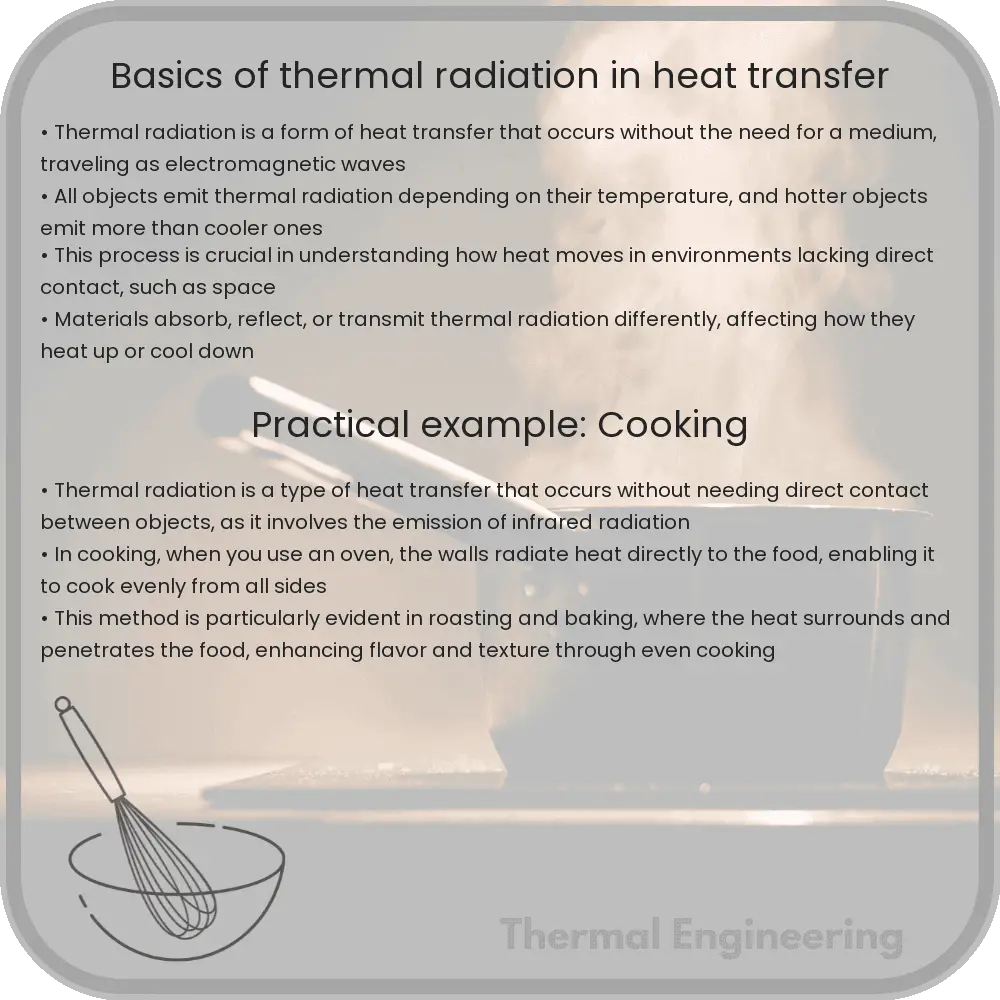Learn about thermal radiation, a key mode of heat transfer that involves energy emitted by bodies due to their temperature and travels as electromagnetic waves.

Understanding Thermal Radiation in Heat Transfer
Heat transfer is a fundamental concept in both engineering and physics, describing the process by which thermal energy is exchanged between physical systems. One of the three primary modes of heat transfer is thermal radiation, which unlike conduction and convection, does not require a medium to propagate. This article explores the basics of thermal radiation, explaining its principles, characteristics, and real-world applications.
What is Thermal Radiation?
Thermal radiation is energy emitted by a body due to its temperature. It is a form of electromagnetic radiation, which means it can travel through the vacuum of space. The intensity and wavelength of the radiation depend on the temperature of the emitting body. All objects above absolute zero (0 K) emit thermal radiation, making this a ubiquitous phenomenon in both nature and engineered systems.
The Laws Governing Thermal Radiation
- Planck’s Law: This law describes the spectrum of radiation emitted by a body at a definite temperature. Planck’s Law helps in determining the distribution of electromagnetic radiation at different wavelengths.
- Stefan-Boltzmann Law: It states that the total energy radiated per unit surface area of a black body in unit time (j*) is directly proportional to the fourth power of the black body’s temperature (T). Mathematically, it is expressed as:
j* = σT4
where σ (sigma) is the Stefan-Boltzmann constant, approximately equal to 5.67 x 10-8 W/m2K4.
- Wien’s Displacement Law: This law indicates that the wavelength at which the intensity of radiation is maximum decreases as the temperature increases. It is useful for determining the peak wavelength of emitted radiation, giving an insight into the energy characteristics of the radiation.
Factors Affecting Thermal Radiation
- Temperature: Higher temperatures result in increased radiation intensity. As per the Stefan-Boltzmann Law, a small increase in the body’s temperature will produce a disproportionately large increase in the radiation it emits.
- Surface properties: Surfaces with different emissivities emit radiation differently. A perfect black body, which has an emissivity of 1, emits the maximum amount of radiation possible at a given temperature and is purely theoretical. Real-world materials have emissivities less than 1, affecting their thermal radiation properties.
Applications of Thermal Radiation
Thermal radiation principles find applications across various fields, including:
- Astronomy: Scientists study the thermal radiation emitted by celestial bodies to determine their temperature and composition.
- Thermal imaging: This technology uses cameras that detect radiation in the infrared range of the electromagnetic spectrum, making it possible to see areas of heat whether in darkness or obscured by smoke.
- Building design: Understanding thermal radiation helps in designing buildings that optimize energy usage for heating and cooling. Materials are chosen based on how well they absorb or emit radiation.
- Solar panels: Solar technology uses radiation from the sun to generate electricity, efficiently converting solar radiation into usable energy.
Conclusion
Thermal radiation plays an essential role in the study and application of heat transfer processes in various engineering and scientific contexts. By understanding the fundamental principles that govern this form of radiation, professionals can design more efficient systems and improve existing technologies. With its wide range of applications, from industrial manufacturing to environmental control, thermal radiation remains a critical area of study within both engineering and physics.